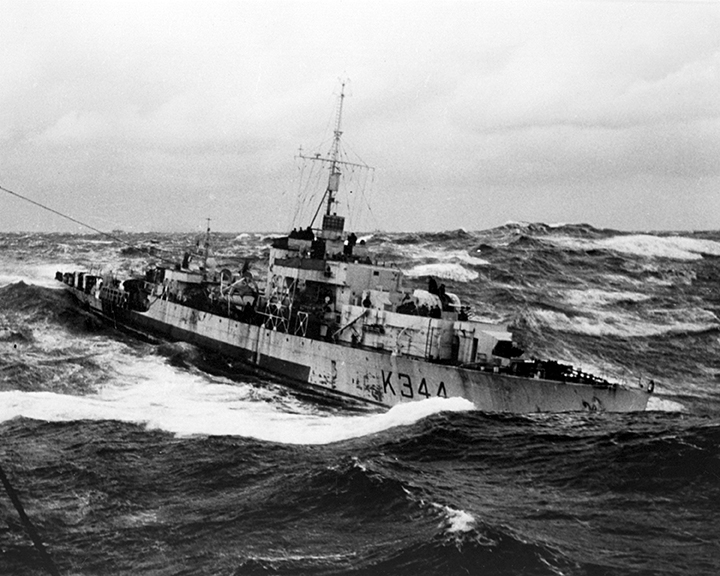HMCS Sea Cliff
There has been only one vessel named HMCS Sea Cliff in the Royal Canadian Navy.
HMCS Sea Cliff (K344)
At first designated as twin-screw corvette, this class was designed for the Royal Navy and was intended to remedy the corvette’s shortcomings as an ocean escort. A far more habitable ship than the smaller corvette, it was also faster and had twice the endurance. Despite the name of the class (River), the Royal Canadian Navy named their ships for towns and cities. The River Class frigates were used as anti-submarine convoy escorts in the North Atlantic.
Alternatively named for Leamington, Ontario because there was another ship bearing that name in a Commonwealth navy; the River Class frigate HMCS Sea Cliff was commissioned on 26 September 1944 at Québec City, Québec.
She arrived at Halifax, Nova Scotia, on 20 October, proceeding to Bermuda in November to work up. On completion, she sailed to St. John’s, Newfoundland, to become a member of Escort Group C-3, and left 23 December to join her first convoy, HX.237. She spent the remainder of the war on North Atlantic convoy duty, and on 21 May 1945 left Londonderry, Northern Ireland, for the last time, to join convoy ON.304 on her passage to Canada. She began refit at Liverpool, Nova Scotia, on 10 June, but work was halted 28 August due to the end of the war. She was placed in reserve at Shelburne, Nova Scotia, until 1946, when she was sold to the Chilean Navy and renamed Covadonga. She was broken up in 1968.
- Builder: Davie Shipbuilding and Repairing Co. Ltd., Lauzon, Québec
- Date laid down: 20 July 1943
- Date launched: 8 July 1944
- Date commissioned: 26 September 1944
- Date paid off: 28 November 1945
- Displacement: 1468.2 tonnes
- Dimensions: 91.9 m x 11.1 m x 2.7 m
- Speed: 19 knots
- Crew: 141
- Armament: two 4-inch (102-mm) (1 x II), one 12-pound (5.45 kg) gun, eight 20-mm guns (4 x II), one Hedgehog mortar and depth charges
